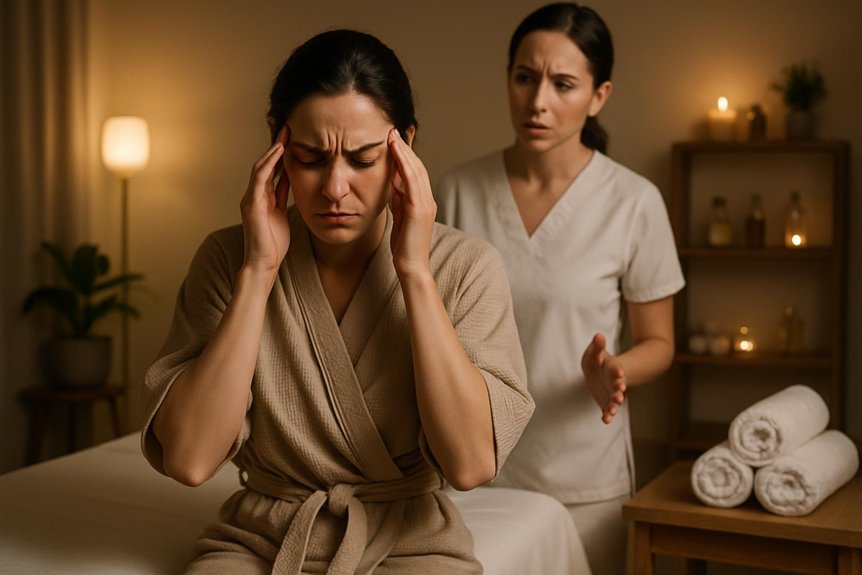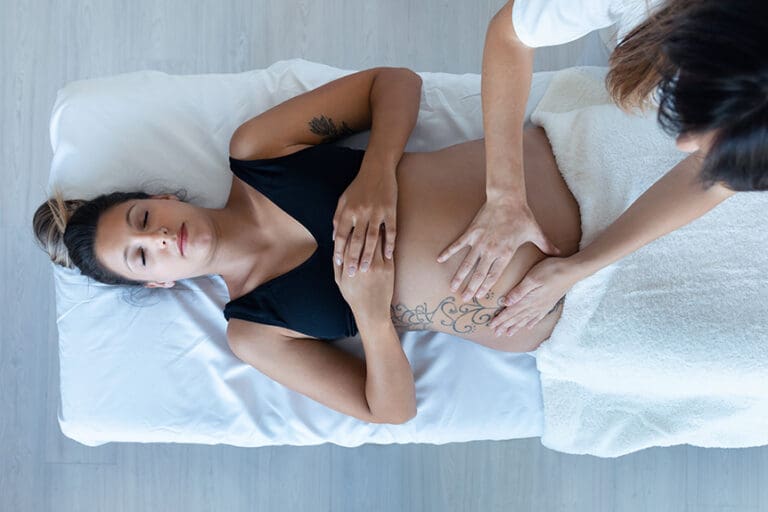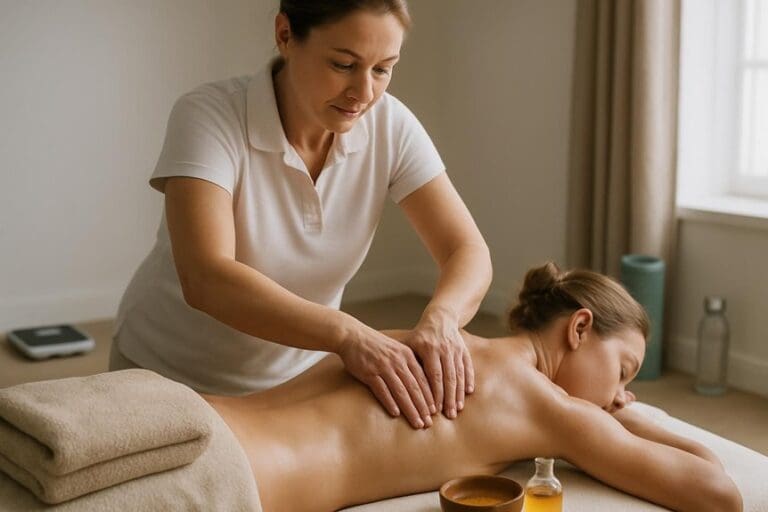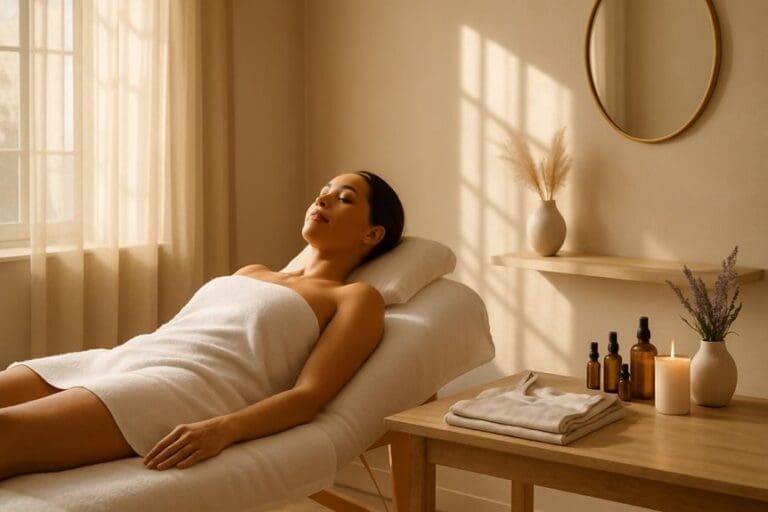Yes. It can trigger a temporary headache in some people. Contributing factors include pressure on trigger points, changes in circulation and vascular tone, heightened nervous system activity, dehydration, and mild hypoglycaemia. Neck positioning, rapid escalation of pressure, or strong aromatics may add sensitivity. Individuals with TMJ issues, bruxism, prior whiplash, poor sleep, or high caffeine intake are more susceptible. Most headaches ease with hydration, gentle movement, and rest. Certain warning signs warrant medical review. Practical steps and safer options follow.
Why Some People Get Headaches After Deep Tissue Massage
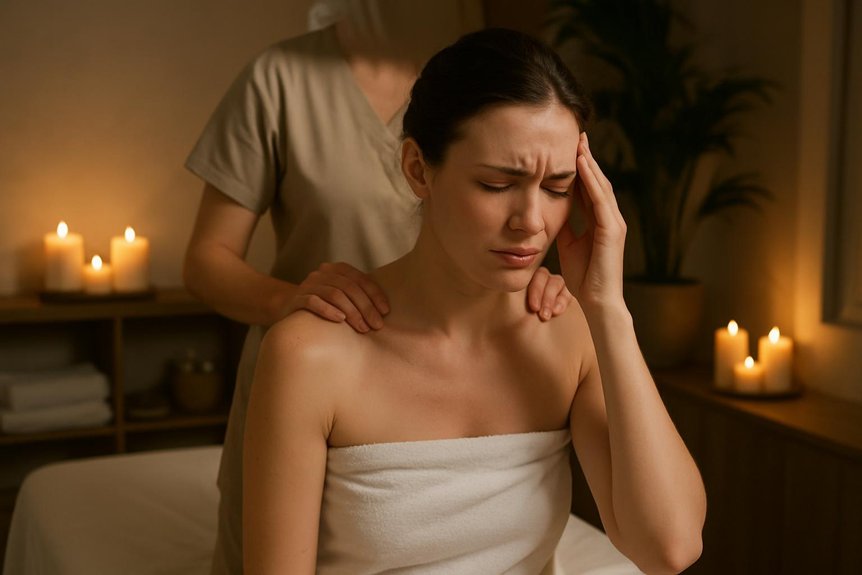
After a massage session, some individuals experience a transient headache due to a combination of physiological responses: increased circulation mobilising metabolic by-products, release of muscular tension altering posture and pressure patterns in the neck, and heightened nervous system activity.
Evidence suggests these short-lived shifts in vascular tone and neuromuscular balance can sensitise pain pathways. Dehydration and mild hypoglycaemia may compound sensitivity.
From Spa & Massage’s perspective, this response is understandable and manageable. Their therapists encourage gradual pressure progression, attentive breathing, and unhurried progressions off the table to ease cervical loading.
They also recommend hydrating before and after, eating a light snack if sessions follow fasting, and applying a warm compress to the neck at home.
Most clients report symptoms resolving within 12–24 hours, often followed by easier movement and deeper calm.
Additionally, integrating aromatherapy massage techniques with deep tissue sessions may provide further relaxation and promote headache relief.
Common Triggers During a Session That May Lead to Headache
During deep tissue work, several in-session factors can precipitate a post-treatment headache. Excessive pressure over the suboccipital region, upper trapezius, or temporalis can irritate trigger points that refer pain to the head. Sustained pressure without adequate pause may spike sympathetic tone, while rapid progressions from light to deep strokes can provoke a protective stress response.
Prone positioning with the neck hyperflexed, a poorly adjusted face cradle, or breath-holding during intense strokes can reduce oxygenation and invite tension. Insufficient hydration before or during a long session may compound the risk. Strong essential oils or mentholated balms can trigger sensitivity in some clients.
At Spa & Massage, therapists monitor client feedback, adapt depth gradually, and observe subtle cues—facial tension, guarded breathing, or flinching—to reduce headache-provoking inputs.
How Our Therapists Minimise Post-Massage Headaches
Thoughtfully and methodically, Spa & Massage therapists minimise post-massage headaches by combining careful assessment with precise technique and pacing.
They begin with a focused health screen, hydration check, and headache history, then map trigger points around the neck, jaw, scalp, and upper back. Pressure is introduced gradually, with intervals that allow tissues to adapt and circulatory shifts to settle.
They stabilise the neck with supported positioning, avoid sustained compression at the suboccipitals, and blend slower myofascial work with shorter deep-tissue bouts.
In our clinics, hypoallergenic oils reduce skin irritation, and therapists coordinate breath cues to soften guarding. Sessions close with gentle cervical mobilisations, a measured cool sip of water, and simple aftercare—light stretching, warm showers, and unhurried pacing—so clients leave clear, grounded, and comfortable.
When a Headache Signals Something Else: Red Flags to Know
Although most post-massage headaches are benign and short-lived, certain features warrant prompt medical evaluation before any further bodywork. Red flags include a “worst-ever” or abrupt thunderclap onset; headache with fever, stiff neck, seizure, confusion, fainting, or new neurological changes (weakness, vision loss, trouble speaking); headache after head or neck injury; a new pattern in those over 50; persistent or escalating pain beyond 72 hours; headache triggered by exertion or coughing; and headaches in pregnancy or the postpartum period.
Sudden neck pain with a different, severe headache can suggest arterial issues and needs urgent assessment.
At Spa & Massage, therapists encourage clients to share symptoms openly and will pause treatment if concern arises, guiding them to seek timely medical care before resuming any massage plan.
Practical Aftercare Steps to Prevent or Ease Headaches
After deep tissue work, targeted aftercare can reduce the chance of a headache and ease any that arise. Spa & Massage recommends sipping water steadily for several hours, favouring electrolyte-rich fluids if light-headed.
Gentle neck and scalp mobility—slow nods, side bends, and small circles—can relieve residual tension; two to three minutes is sufficient. Applying a warm compress to the neck and a cool compress to the temples often helps.
Clients are advised to avoid alcohol and heavy exercise for 12–24 hours. A light, balanced meal supports recovery. If sensitivity persists, magnesium glycinate in the evening may be appropriate; those with medical conditions should consult a clinician first.
Our therapists suggest a lukewarm shower, unfragranced moisturiser, and quiet time. Paracetamol can be used as directed if needed.
Who Is More Prone to Post-Massage Headaches
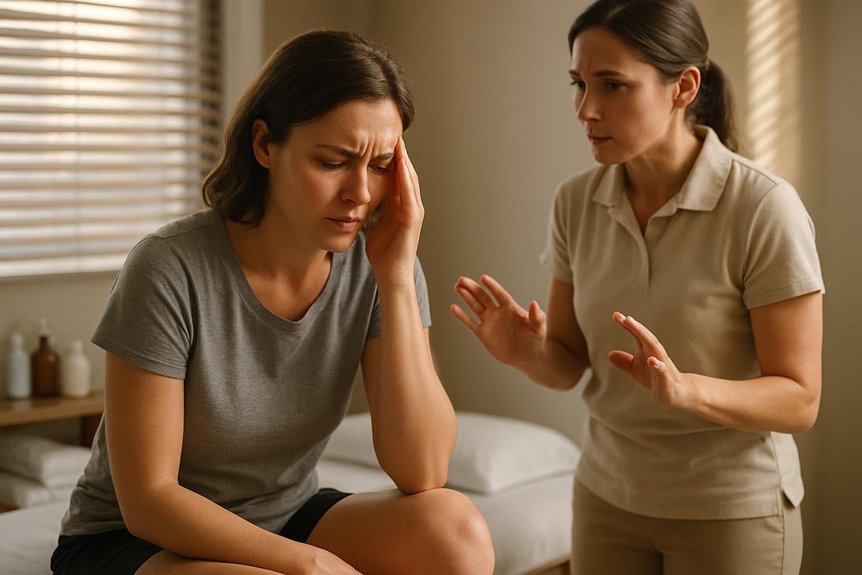
Clients appear more prone to post-massage headaches when dehydration and baseline neck or jaw tension are present, as fluid deficits and trigger points can amplify post-session sensitivity.
Heightened stress, poor sleep, or a personal tendency toward migraines can also increase reactivity to deep tissue work.
Medical history factors—such as low blood pressure, caffeine withdrawal, sinus issues, or recent illness—warrant extra care, which Spa & Massage therapists assess during consultation to tailor pressure, pacing, and aftercare.
Dehydration and Tension
Certain clients are more susceptible to post-massage headaches when dehydration and muscular tension are present. Limited fluid intake can reduce plasma volume and impair tissue perfusion, while sustained neck and jaw tightness can trigger referred pain patterns.
Together, they increase the likelihood of a short-lived, dull-to-throbbing headache after deep tissue work.
At Spa & Massage, therapists routinely assess water intake and palpable tension before treatment, then modulate pressure around the suboccipitals, upper trapezius, and temporalis to minimise overload.
They encourage clients to arrive hydrated and to sip water slowly for several hours post-session.
Gentle cervical mobility, diaphragmatic breathing, and a warm shower are recommended to ease residual tightness.
Clients prone to tension-type headaches often benefit from shorter, focused sessions and clear aftercare—supportive, simple, and restorative.
Stress and Sensitivity
Many individuals with heightened stress reactivity or sensory sensitivity are more likely to experience a transient headache following deep muscle therapy. Evidence suggests that elevated baseline cortisol, poor sleep, and hypervigilant pain pathways can amplify post-session aftereffects as the nervous system recalibrates.
Those who process stimuli intensely may react to strong pressure, brisk tempo, or abrupt *shift*.
At Spa & Massage, therapists gauge tolerance early, adjust depth gradually, and use paced breathing to modulate arousal. Clients who identify as sensitive often benefit from slower strokes, longer warm-up, and quieter room settings.
Gentle neck work and lighter scalp techniques reduce trigger responses.
Post-session, our therapists recommend unhurried hydration, dim light, and mindful pacing home. Sharing preferences—pressure, music, conversation level—helps tailor care, protecting comfort while preserving therapeutic gain.
Medical History Factors
A history of migraines, tension-type headaches, neck or jaw disorders, dehydration risk, and medication use can increase susceptibility to a post–deep pressure therapy headache.
Individuals with cervical spondylosis, temporomandibular joint dysfunction, bruxism, or prior whiplash often exhibit heightened myofascial sensitivity. Vigorous work to the neck and shoulders may transiently amplify nociceptive input.
Triptans, SSRIs/SNRIs, hormonal contraception, and diuretics can influence vascular tone or hydration, further shaping response.
Low baseline fluid intake, high caffeine use, and poor sleep add risk.
At Spa & Massage, therapists screen for these factors. They adapt pressure, shorten initial sessions, and prioritise gradual work around the suboccipital and jaw regions.
They encourage pre-session hydration, gentle breathing, and paced aftercare. Clients are invited to share triggers so treatment remains soothing, precise, and safe.
Choosing the Right Massage Type at Spa & Massage for Your Needs
Choosing the right massage at Spa & Massage starts with clear goals—whether relief from tension, support for training, pregnancy-safe care, or general relaxation.
Matching pressure and technique matters: some clients respond best to firm, targeted work (e.g., deep tissue or sports), while others benefit from gentler approaches like aromatherapy to reduce the risk of post-massage headaches.
Their therapists provide tailored recommendations after a brief consultation, adjusting intensity, pacing, and aftercare to each person’s needs.
Assess Your Goals
Before booking, it helps to define the primary outcome—pain relief, improved mobility, stress reduction, recovery from training, or support during pregnancy—so the therapist can match the technique to the goal. Clear aims reduce the chance of post-session discomfort, including headache, by guiding session pacing, areas of focus, and aftercare.
At Spa & Massage, therapists invite clients to share specific concerns: location of tension, recent activity, headache history, and desired mood after treatment. For persistent musculoskeletal pain, evidence supports targeted deep tissue or sports massage; for stress-sensitive clients, aromatherapy or a gentler blend may be preferable. Pregnancy massage is tailored for comfort and circulation.
Clients are encouraged to state pressure preferences, previous reactions, hydration habits, and schedule needs. This collaborative clarity helps deliver results while minimising adverse effects.
Pressure and Technique
Pressure and technique are matched to a client’s goals, pain history, and tissue sensitivity, with therapists at Spa & Massage adjusting depth and pace based on clinical reasoning and real-time feedback.
Evidence suggests gradual pressure, sustained holds, and myofascial techniques reduce post-session headaches by limiting abrupt nociceptive input and excessive sympathetic arousal.
In practice, slow warming strokes precede targeted work on trigger points in the neck, suboccipitals, and jaw, avoiding compressive force that overwhelms delicate structures.
Therapists favour diaphragmatic breathing cues and unhurried progressions to preserve comfort and circulation.
Oil choice is kept simple and hypoallergenic to minimise irritation.
Clients are invited to rate pressure numerically and describe sensations—sharp, dull, referring—so adjustments are precise.
This calibrated approach protects the head and neck while delivering effective relief.
Therapist Recommendations
Two guiding questions shape therapist recommendations at Spa & Massage: what is the client’s primary goal, and what provokes or eases their symptoms.
From this intake, therapists match pressure, pace, and technique to reduce headache risk and support comfort. When muscular knots drive tension, a focused deep tissue or sports massage is proposed with gradual pressure and breath coaching.
If stress and sensory overload are dominant, a gentler aromatherapy massage with calming essential oils used in our clinics may be preferable.
Clients with recent migraines, dehydration, or sleep deficits are guided toward lighter work first, then reassessed.
Pregnant clients receive pregnancy massage protocols.
For chronic neck strain, myofascial release and scalp work are introduced carefully.
Every plan includes hydration advice, aftercare, and monitored progression.
Conclusion
In brief, clients can expect deep pressure therapy to relieve tension for most, while a small minority may experience temporary headaches linked to circulation shifts, trigger point release, hydration, or posture—nothing the clinic’s tailored pressure, communication, and aftercare can’t often prevent. When red flags arise, therapists advise appropriate medical referral. Spa & Massage’s London team guides clients to the right modality for their goals—like choosing the right app on a floppy disk—delivering evidence-based care that prioritises comfort and outcomes.
